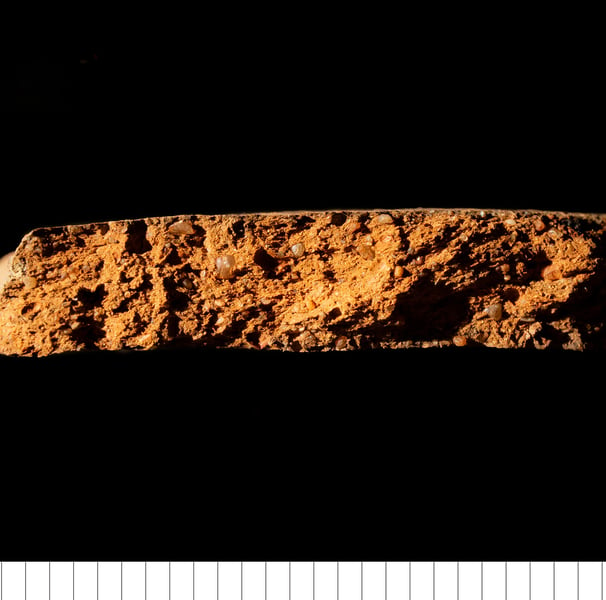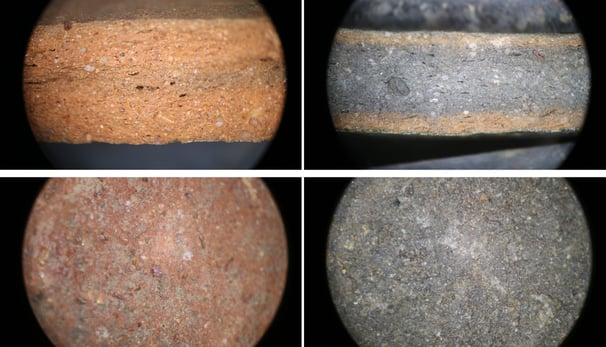IPSG - Ipswich Glazed Ware
Glazed version of the coarseware (MIPS), produced in the same kilns. Forms similar to Hollesley. Abundant v fine to fine sand (<0.3mm, well-sorted); sparse coarse sand (0.5mm+); sparse clay pellets (0.2-0.5mm); sparse mica. V fine black inclusions visible under microscope. Note that the larger sand grains visible in the example are not a common feature of the ware - see the microscope pictures below.
TS sample description (Patrick Quinn): Silt to fine sand-sized sub-angular to angular inclusions of quartz, chert, muscovite mica and opaques. The latter may include some rare oxidised glauconite. Rare silt-sized feldspar and amphibole. Uneven distribution of more rounded sand-sized inclusions could indicate temper, but grain-size distribution is not bimodal. Occasional clay rich pellets. Non-vitrified, non-calcareous clay matrix that is oxidised on the exterior and reduced in the interior. Frequent meso-elongate drying voids.
Example from the Ipswich kiln site.




IPSG - Ipswich Glazed Ware - microscope photos
Sections and surfaces of two IPSG sherds, as viewed through the microscope.
Examples from the Ipswich kiln site.
Copyright
This website, and the type series, was created by Dr Sue Anderson, Spoilheap Archaeology: www.spoilheap.co.uk
I am available for contract work on pottery from East Anglia and beyond. Email sue@spoilheap.co.uk
© 2024. All rights reserved.
To visit the type series at Suffolk County Council Archaeological Service, Bury St Edmunds, contact Faye Minter: Faye.Minter@suffolk.gov.uk
Tel: 01284 741 228 to make an appointment.